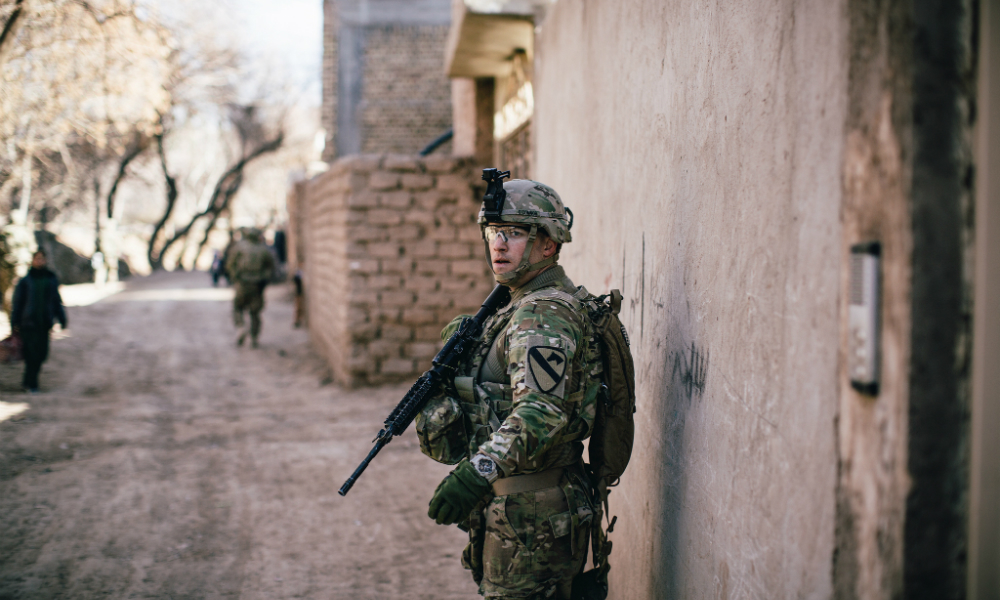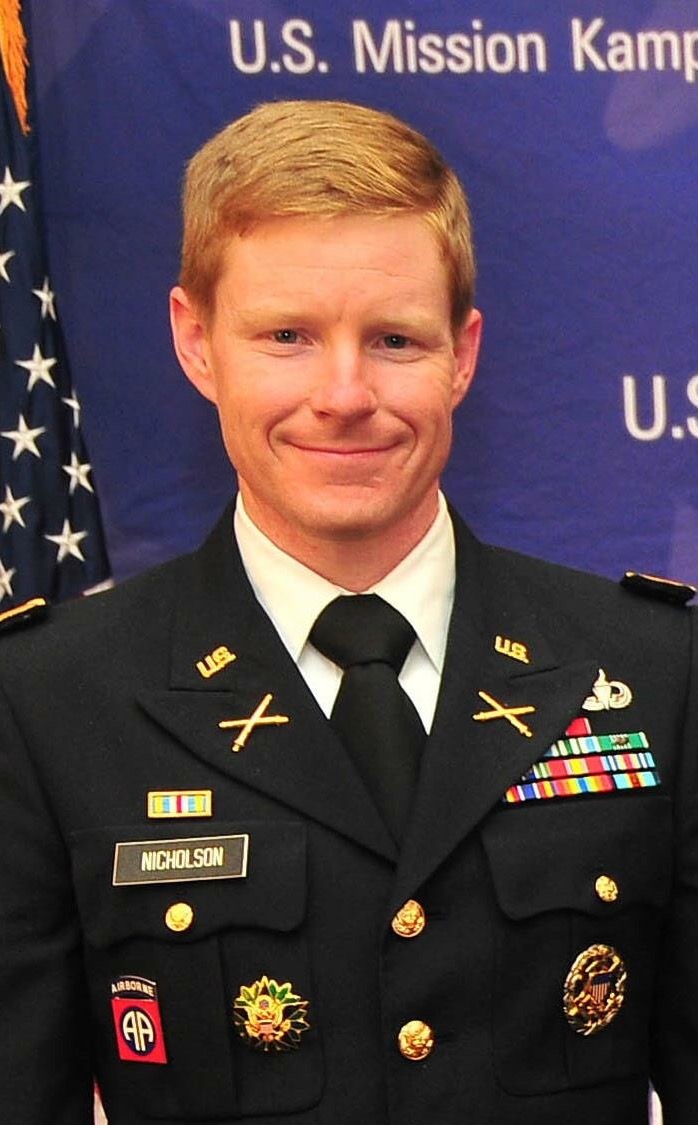Today, military planners focus intensely on countering Russian revanchism in Europe and containing Chinese expansionism in Asia. After more than a decade and a half of fighting “small wars” In Iraq and Afghanistan and conducting counterterrorism strikes in many more countries, our national security focus and increasingly prevailing wisdom suggest the international system may be returning to an era of great power war.
Except, it is not.
Despite predictions to the contrary great power conflict will not dominate global security issues in the twenty-first century. Wars between great powers have steadily declined since WWII with the influence of nuclear weapons upon the international system, a trend that pre-dates American hegemony and argues against unipolarity as the sole causal factor. However, while great power war is unlikely to emerge in the near future, war itself will remain a constant feature of the international system. Instead of large-scale, inter-state conflicts, though, the prevalent form of conflict for the foreseeable future will be civil wars. Nationalism, or even fragmented and atomized derivative identities, will be the driving factor behind these conflicts, manifesting principally as insurgencies.
The end of the Cold War and the collapse of the bipolar balance of power thawed previously frozen conflicts. From the Balkans to the Caucasus, through the Middle East, to Africa and Southeast Asia, issues of ethnic and nationalist identity have driven political conflicts that have often become violent, and have frequently taken the form of insurgencies. Both contemporary scholarship and US military doctrine indicate insurgents often adopt identity-focused strategies based upon religion, language, or ethnicity. The slow unraveling of artificially constructed and imposed nation-states that has contributed to these post–Cold War insurgencies has far from run its course; the majority of these states and their boundaries remain, and the unraveling will continue throughout this century. The conflicts of the future are going to look more like the ongoing civil war in South Sudan than a great power war across the Taiwan Strait.
The contemporary debate involving the manning, training, and equipping that the US military should undertake in order to modernize and prepare for future conflicts continues to build momentum. In large part this conversation is a reaction to the winding down of the Afghanistan and Iraq wars. Many observers view the Russian intervention in Ukraine and Chinese actions in the South China Sea as a glimpse into the nature of future security threats that the US military will likely be forced to confront. Such situations present potential threats to US interests, the case for modernization goes, and other, similar challenges will occur in the near, medium, and long term. Modernization advocates highlight the nature of these threats in order to justify extensive and expensive rearming, retraining, and restructuring initiatives.
This situation does not imply the US military is not in need of recapitalization—particularly the Army, which has seen all of its major systems canceled. The recent wars are only a contributing factor to the services’ need for reinvestment. The expected peace dividend and the changing nature of threats after the Cold War, along with more recent factors such as the Great Recession have all resulted in steady under-investment in military modernization beyond peripheral updates to incorporate new technological trends in miniaturization and increased computerization. However, decisions about future force structure and platform development cannot solely focus upon potential near-peer competitors and high-intensity conflict scenarios as the basis for strategic forecasting.
The Army’s recently announced plan to create six security force assistance brigades (SFAB) indicates that service leadership is also planning for smaller-scale but much more likely conflict, alongside efforts to prepare for major war. Security cooperation activities throughout the joint force in support of combatant commanders require specialized training and focused skillsets to fully enable success, so the establishment of the SFABs is a solid beginning in preparing for future challenges. And yet, despite having waged counterinsurgency warfare nonstop since 2002 the Army has failed to sufficiently capitalize on this experience. The costly lessons of war have not been institutionalized to optimize force structure or platform development, beyond ancillary steps that really only leverage modern commercial off-the-shelf technology. While major combat systems are in need of critical overhaul this should not be accomplished at the expense of preparing for the Army’s most likely types of future combat missions.
The last sixteen years of ongoing military operations have been conducted at the expense of future requirements of all types. The modernization problems presented by “small wars” challenge the Army as surely as those related to high-intensity conflicts. While the SFABs are a step in the right direction, greater investment is required to maximize the lessons learned after sixteen years of counterinsurgency. Training for specific missions like combat advising and security force assistance should be institutionalized for tactical units beyond the designated SFABs. The need for additional capabilities for operating in austere environments will also drive equipment requirements such as lighter power generation and enhanced tactical mobility. Greater expeditionary logistics, armor, and fire support assets will also be critical in future operations. Hybrid warfare, from the Russian campaign in Ukraine to the French campaign in Mali, will continue to change the nature of “small wars.” Megacities, climate change, and other similar challenges will require the same attention to detail by the Army as near-peer conflict in order to ensure future operational success.
As the Trump administration seeks to grow the military hard decisions about future threats and current force structure will be required. The Army provides an excellent example of the challenges presented by such issues. If the next generation of primary combat systems endures in the force as long as the “big five”—the MIM-104 Patriot Missile System, the M1 Abrams, the M2 Bradley, the AH-64 Apache, and the UH-64 Blackhawk— have, the Army is potentially looking at a 40- to 50-year investment. Other systems—like the outdated self-propelled fire support platform, the M109 Paladin, which debuted in the early 1960s—are also in need of updating. The costs associated with platform development are high. They will only increase given the demands of the modern battlefield for more automation, more computing power, more mobility, and more survivability. A well-balanced and forward-looking strategy for acquisition and development of systems and force structure should focus not only on the most dangerous threats but be heavily influenced by the most likely threats as well.
Image credit: Cpl. Alex Flynn, US Army



I’m not sure the current ask for change is assuming a large war between two (or more) superpowers. I think the multi-domain change is more about re-train the U.S. forces to assume to be challenged in all domains. In that sense, is assuming the adversary has advance capabilities and can integrate those well against U.S. forces. And the drive of that is more about how accessible complex technology is going forward. IMHO proxy conflicts where nation states and non-nation states are armed and supported by one or more of the key players will be the norm. Civil wars, like you said, will certainly play a role, as it did before. But if you engage in the battlefield with Tango units that also are highly trained or well equipped (regardless if they are mercs, soldiers embedded in local militia, or trained paramilitary) then things can get complicated rather quickly. A practical example would be a heavy handed Syrian war. Imagine if U.S. troops engage a force that is directly supported by Russians (for sake of argument, let’s say by accident). Unless relations are at least cordial it is possible that both sides wouldn’t cease-fire immediately. Soon a small short-lived deadly battle will happen before disengagement. Consequences might be a war of words, a wave of sanctions, but most likely not war. But all of that will be irrelevant for the units that were in the engagement: they just had faced an advanced adversary and the battle most likely was faster and more brutal that today’s engagements.